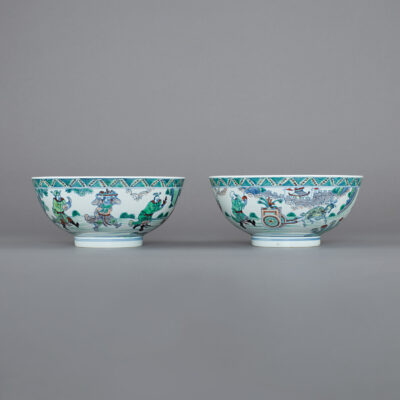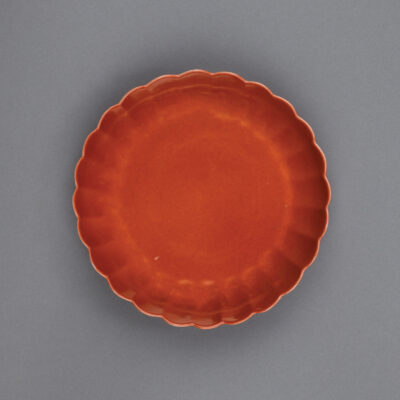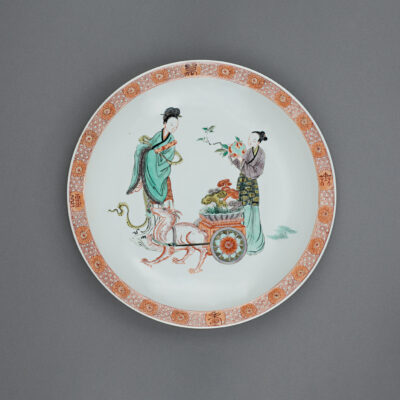10 – M5480/1
Description
Pair of Chinese imperial porcelain doucai figural bowls of deep form, wan, thinly potted with upright sides, each painted on the exterior in a continuous landscape scene with five tribute bearers carrying incense bowls, an aquatic branch, a tray of fruit and a cornucopia, all following a tethered yellow-glazed deer pulling a carriage of aquatic branches and peacock feathers, approaching a walled city amongst clouds, flowers, plants and rockwork beneath a triangular diaper band at the rim and above two underglaze blue lines at the foot. The well of the interior painted with a mountainous landscape medallion with a house nestled amongst pine trees and rockwork beneath the sun and migrating birds, encircled by two double lines in underglaze blue.
Each base with a six-character mark of Yongzheng within a double ring in underglaze blue and of the period, 1723-1735.
7 inches, 17.8 cm diameter.
Provenance & Additional Information
- From a private Japanese collection, acquired prior to 1970.
- Sold by Christie’s New York in their auction of Important Chinese Ceramics and Works of Art, 23rd & 24th March 2023, lot 1059.
- A similar example from a private collection in Worcestershire was included by Marchant in their catalogue of Recent Acquisitions, 2003, no. 12, pp. 20/1 where it is noted that, “this bowl displays many features which are apparent on imperial Kangxi wares and was therefore almost certainly produced at the beginning of the Yongzheng reign. This is confirmed by the style of the writing of the three-column mark”.
- This design and form are taken from Wanli imperial doucai bowls; one is illustrated by Wang Qingzheng in Kangxi Porcelain Wares from The Shanghai Museum Collection, Shanghai, 1998, 177, pp. 270/1, where the author illustrates a Kangxi doucai bowl of this form with a three-column Kangxi mark, perhaps written by the same hand, no. 159, p. 246/7.
- Yongzheng bowls of this pattern are extremely rare and very few examples appear
- Tribute bearers were a popular motif during the Tang dynasty as they symbolised the forging of political and economic The design was appreciated by the emperor as it was generally he who was presented with diplomatic gifts.














